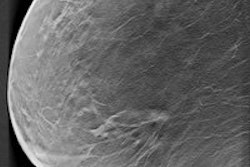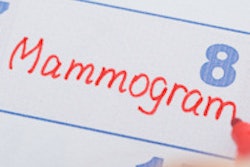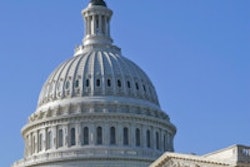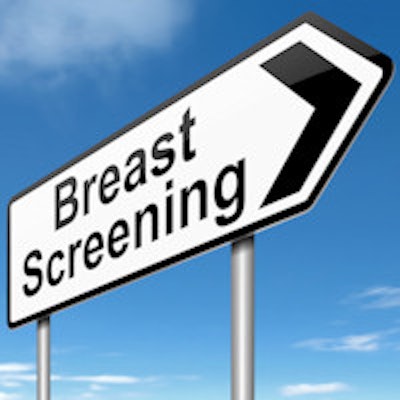
The American Cancer Society (ACS) has released new breast cancer screening guidelines that raise its recommendation to age 45 for when women should start screening. Are the guidelines a blow to proponents of early mammography? Or do they represent an effort to develop a more nuanced approach to mammography screening?
Until today's guideline revision, published in the Journal of the American Medical Association, ACS had marched in lockstep with groups including the American College of Radiology (ACR) and the Society of Breast Imaging (SBI) in advocating that screening start at 40. However, accumulating evidence has suggested that accurately assessing breast cancer risk could be more complicated than simply an age-based calculation -- a realization that prompted ACS to review its previous guidelines, most recently issued in 2003.
The question is how the change will be perceived by the groups on various sides of the war over mammography. ACR and SBI are pointing to the fact that the new ACS guidelines still support annual screening for women ages 40 to 44 who want it. But mammography skeptics may crow that the new advice provides at least some validation for the questions they have raised about the efficacy of population-based breast screening.
Independent analysis
The age at which women should begin breast screening has been one of the most hotly debated points in public health policy over the past decade. ACR, SBI, and, until this week's announcement, ACS had recommended annual screening starting at age 40, while some skeptics of breast screening advocated starting at 50, with screening every other year to boot. Some mammography opponents have even questioned population-based screening entirely.
 Robert Smith, PhD, director of cancer screening at ACS.
Robert Smith, PhD, director of cancer screening at ACS.To address ongoing questions about mammography and to incorporate new research, ACS organized a guideline development group that included clinicians, biostatisticians, epidemiologists, an economist, and patient representatives. It chose the Duke University Evidence Synthesis Group to perform an independent systematic evidence review of breast cancer screening literature, and commissioned the Breast Cancer Surveillance Consortium (BCSC) to update previously published analyses about screening interval and outcomes. Finally, before the final guideline was submitted for publication, ACS invited 26 outside organizations and 22 expert advisors to review it (JAMA, October 20, 2015, Vol. 314:15, pp. 1599-1614).
The group also addressed the issue of the harms of mammography, as well as whether it still makes sense to think of breast cancer risk in 10-year age increments, said Robert Smith, PhD, director of cancer screening at ACS and the corresponding author on the JAMA study.
"We sought to think carefully about 'harms,' and what we really mean when we use that term," Smith told AuntMinnie.com. "We also looked carefully at the burden of disease in five-year age groups of women and found that the burden of disease and rate of harms are comparable in women in their late 40s to women in their early 50s."
ACS categorized each part of the new guidelines as either "strong" or "qualified" -- "strong" meaning the group reached consensus that the benefit of the intervention outweighs the harms, and "qualified" meaning that there is clear evidence of benefit but less certainty about the balance of benefits and harms and patients' values and preferences. Only the start age for breast cancer screening received a "strong" recommendation.
ACS' 2015 recommendations are as follows:
- Women with an average risk of breast cancer should start breast cancer screening at age 45 (strong recommendation).
- Women ages 45 to 54 should be screened annually (qualified recommendation).
- Women 55 and older should transition to biennial screening -- but also have the opportunity to be screened annually if they wish (qualified).
- Women should have the opportunity to be screened annually between the ages of 40 and 44 (qualified).
- Women should continue screening as long as their overall health is good and they have a life expectancy of 10 years or longer (qualified).
- Clinical breast exams are not recommended for average-risk women of any age (qualified).
Why the shift?
So what prompted the shift from recommending screening starting at age 40 to starting at 45? Decisions about the absolute benefit of mammography have been dominated by data from 10-year age groups -- women in their 40s compared with women 50 and older, ACS wrote. But the ACS guidance development group found that the five-year risk among women 45 to 49 and women 50 to 54 was similar, and that it was greater than the risk for women 40 to 44. This was also true for the proportion of all incident breast cancers.
| Breast cancer risk by age group | ||
| Age range | 5-year absolute breast cancer risk, 2009-2011 | Breast cancer incidence rate per 100,000 women, 2007-2011 |
| 40-44 | 0.6% | 6% |
| 45-49 | 0.9% | 10% |
| 50-54 | 1.1% | 12% |
"After careful examination of the burden of disease among women aged 40 to 54 years, the guidance development group concluded that the lesser, but not insignificant, burden of disease for women aged 40 to 44 years and the higher cumulative risk of adverse outcomes no longer warranted a direct recommendation to begin screening at age 40 years," ACS wrote.
In this respect, the updated ACS guidelines are now consistent with those of the U.S. Preventive Services Task Force (USPSTF), in that both statements agree that the harms of mammography likely outweigh the benefits for average-risk women younger than 45. ACS, however, did take pains to state that women should have the opportunity to be screened annually starting at age 40 if they choose.
"[The guidance development group] also concluded that women in this age group should have the choice to begin screening mammography at age 40 years or before age 45 years, based on their preferences and their consideration of the trade-offs," ACS wrote.
The society is currently developing a breast cancer screening guideline for women at higher risk of the disease, Smith said.
Response from mammography supporters
Supporters of mammography have been quick to respond to the shift, emphasizing that the updated ACS guidelines continue to strongly affirm that mammography saves lives.
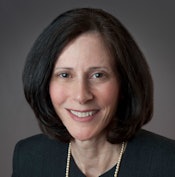 Dr. Debra Monticciolo, chair of ACR's breast imaging commission.
Dr. Debra Monticciolo, chair of ACR's breast imaging commission."This new report shows the value of screening women under 50, in dramatic contrast to the U.S. Preventive Task Force Services' recommendation," Dr. Debra Monticciolo, chair of ACR's breast imaging commission, told AuntMinnie.com. "Women need to understand how much benefit mammography offers. The risks have really been overstated."
ACR commended ACS for its guideline development process, recognizing that the group performed an extensive evidence review, including randomized controlled trials, population-based observational studies, case-controlled studies, and cohort studies.
This goes beyond USPSTF's limited review of only selected studies that underestimate the benefit of mammography screening -- many of which were decades old and used what would now be considered outdated equipment, Monticciolo said. In April, USPSTF released draft breast cancer screening guidelines that reiterated its 2009 recommendation, advising women in their 40s to consult with their physicians about whether to undergo screening and women 50 to 74 get screened every two years.
"In 2011, the [Institute of Medicine (IOM)] said that guidelines aren't trustworthy unless they include particular attributes," she said. "And the USPSTF did not incorporate these standards into its new draft."
What next?
Where will this updated ACS breast cancer screening guideline land in the ongoing, contentious discussion about screening mammography? Hopefully it will further defuse the tension, Smith said.
"I'll be very happy if our guidelines diminish the polarization around this issue," he said. "The hope is that people will really consider these guidelines rather than just defend their entrenched positions, and see that we've given a great deal of attention to modern observational data, acknowledging that the metrics of 'harms' are different than the metrics of avoiding advanced breast cancer -- or dying of the disease."






